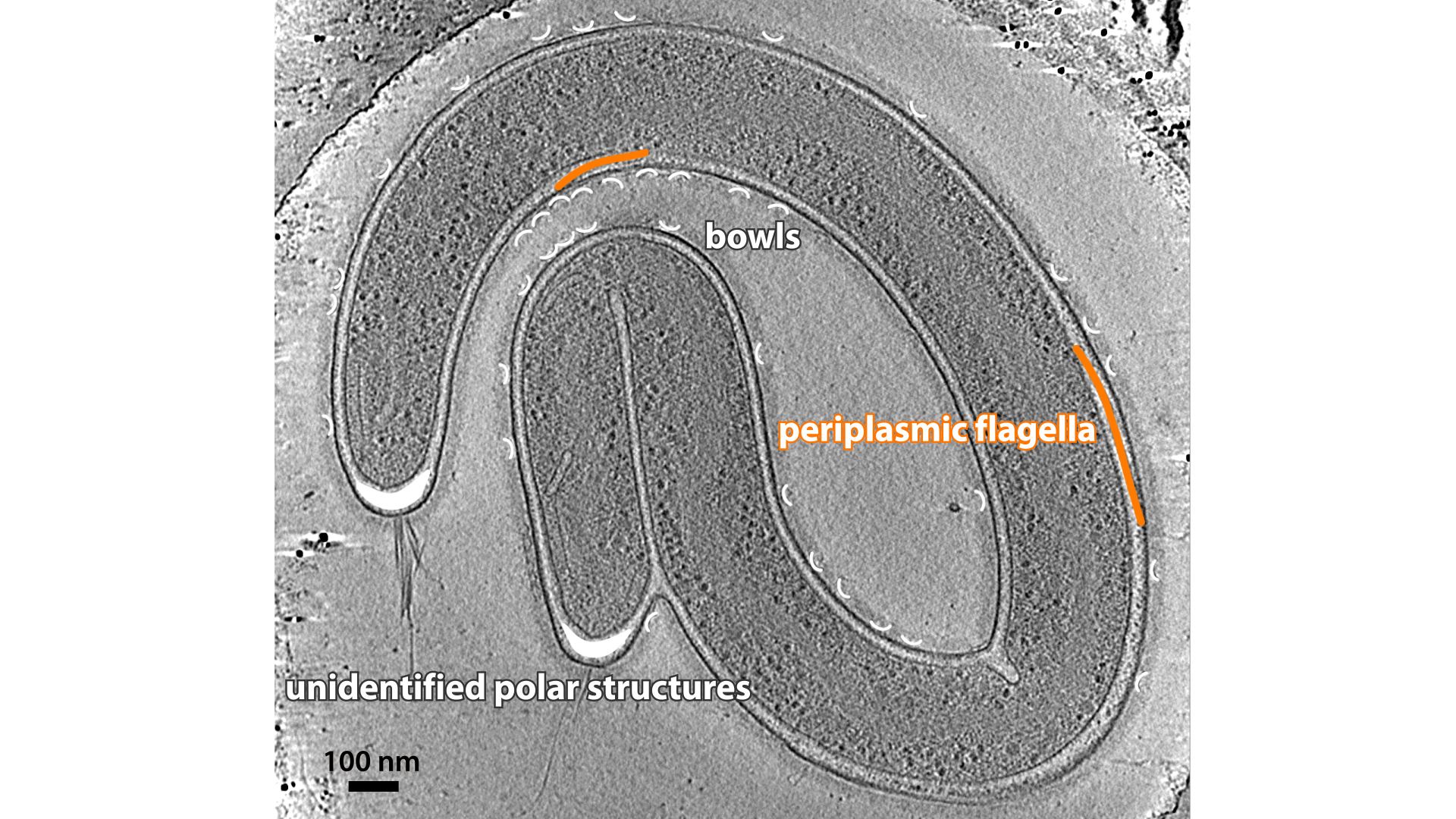If your cell is a pathogen, swimming can be very useful, but so can burrowing, for instance between cells in host tissue. To do this, why not turn your cell into a corkscrew with the equipment at hand? Some cells do just this, wrapping their flagellum around their body to back out of a tight spot, or burrow into one. Other, diderm species like the Borrelia burgdorferi here have turned the temporary adaptation into a permanent one: they assemble their flagella inside the cell envelope, with the filaments wrapping around between the cell wall and outer membrane. These “periplasmic” flagella are usually multiple, arising from one or both ends of the cell, and pack together into a helical ribbon whose rotation drives wave-like motion of the cell (you can watch a video of this movement on YouTube). The helical ribbon helps give these spirochetes (“spiral haired”) their characteristic shape; mutants that cannot make flagella are simple rods. Some spirochetes also have additional features that may help them move around in animal hosts (⇩).




